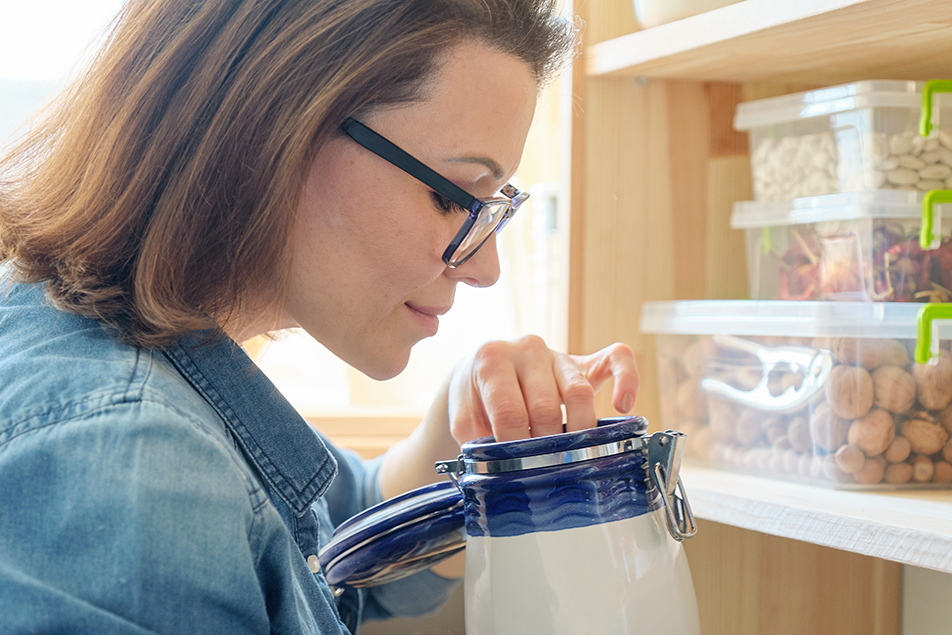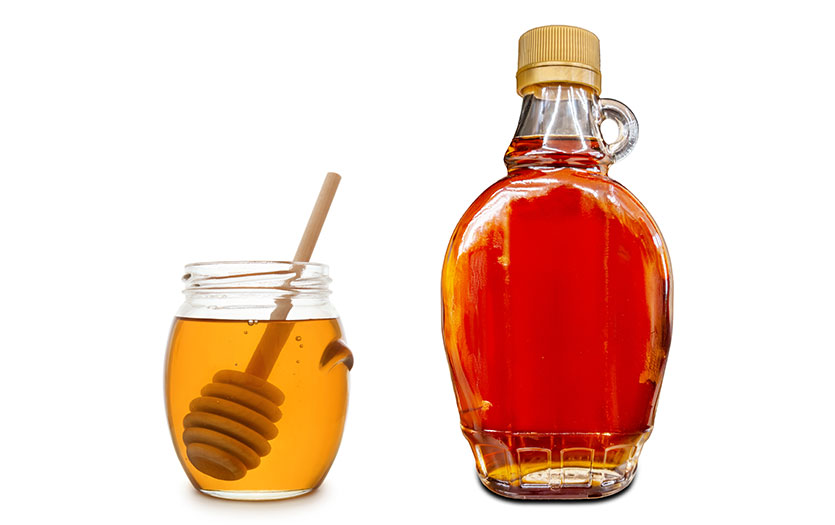
This post was written by Jennifer Gotsch, RDN, and Amanda Langan, RDN.
A well-stocked pantry (or freezer) can make all the difference on busy weeknights, when you have unexpected company or just don’t feel like cooking. The key is to keep staple items on hand that can quickly be turned into a wide variety of meals. Shop for foods from each food group and combine three or more to create a well-balanced and quick dish. Start with a grain for your base and build from there.
Grains
Choose fiber-packed, whole grains like brown rice and pasta, whole wheat crackers and bread, oatmeal or cereals, or something a little more exotic like quinoa or bulgur. Grains fit into most cuisines just by varying the herbs and spices used when preparing them.
Cinnamon, ginger and nutmeg add a hint of sweetness that pairs well with oatmeal. Savory herbs and spices like garlic and onion powder, peppers (cayenne and chili powder), cumin and cardamom enhance the earthy flavors of rice, quinoa and bulgur. If you don’t have time to wait for water to boil, look for frozen, microwavable rice in the freezer section or precooked pasta in the pasta aisle.
Protein
Next, pick your protein. Shelf-stable proteins like beans and lentils are inexpensive, a good source of fiber, available without added fats or salt, and come dry, canned or frozen. Nuts are a great source of protein, fiber and heart-healthy fats. Although nuts are a bit more expensive, a little goes a long way. Just one ounce of nuts has 6 grams of flavor-packed protein. Top salads and oatmeal with up to an ounce of nuts for a healthy crunch.
Canned tuna or salmon are shelf stable, high in protein and loaded with heart-healthy fats. This healthy protein can be eaten hot or cold and pairs well with salads, whole wheat crackers or toast, or works in a quick casserole.
Vegetables
Add some color to your dish by adding a variety of canned or frozen vegetables. You may have heard “don’t eat canned or frozen vegetables because they are not good for you,” but canned and frozen vegetables are a great source of vitamins, minerals and fiber.
These options also have a long shelf life, so you generally do not have to worry about them expiring or spoiling. They are relatively inexpensive, canned or frozen at the peak of freshness, meaning they have a high vitamin content, can be found with low or no added sodium, and can quickly be added to meals.
Adding vegetables to your meal can help you reach the MyPlate recommendations of making half of your plate non-starchy vegetables. Watch out for frozen vegetables that have added sauces which are generally high in sodium. Flavor bland vegetables by playing around with different herbs and spices, while also being mindful to keep the sodium level low. For example, you can add oregano, garlic and basil to canned tomatoes for a quick and easy spaghetti sauce.
Fruit
Naturally sweeten your dish or add a quick and healthy dessert by choosing a variety of canned, prepackaged or frozen fruits. As the saying goes, choose fruits in a variety of colors to help get a variety of vitamins and fiber. Fresh fruit is generally more expensive and can go bad if you don’t eat it in time. Prepackaged or canned fruits are great options to quickly throw in a lunch bag, add as a side to a meal, or for a quick snack.
Some canned fruits have added sugars, so keep an eye on what they are packaged in. If they are packaged in fruit juice, there will be no added sugars, just the natural sugars from the fruits themselves. If they are packaged in syrup, the heavier the syrup, the more sugar that is added to them. Frozen fruits are a great option to add to homemade smoothies. Fruit without added sugars can easily be found in the frozen food aisle.
A well-stocked pantry or freezer means stress-free and healthy meals any day of the week. Start with this fun recipe!
Pantry Burrito Bowls
Give this balanced and healthy homemade burrito bowl a try. Most of these ingredients are already in your pantry.
2 cups uncooked brown rice or 4 cups cooked frozen microwaveable brown rice
2 15-ounce cans low or no sodium black beans
1/2 teaspoon ground cumin
1/4 teaspoon garlic powder
1 16-ounce jar salsa
6 ounces shredded cheese
1 bunch green onions
1 jalapeño (optional)
- Cook rice according to package directions.
- While the rice is cooking, make the beans. Add both cans of black beans (undrained) to a small sauce pot, along with the cumin and garlic powder. Heat over medium, stirring often, until heated through.
- Slice the green onions and jalapeño (if using).
- Once the rice is cooked, build the bowls. Add one cup cooked rice, 1/2 cup warm black beans, 1/3 cup salsa, and 1 ounce of shredded cheese (about 1/4 cup) to each bowl. Top with a few sliced green onions and jalapeños, then serve.
Serves 6



